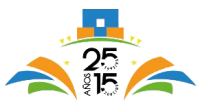Real time spherical correction for a portable refraction device

| AUTHORS / CAREER / CENTER | Miguel Piró Cristobal/ Biomedical Engineering / Universidad Carlos III de Madrid |
| SUPERVISORS | Eduardo Lage / PhD / Universidad Autonoma de Madrid
Carlos Hernandez Torres |
| TYPE | Bachelor Thesis |
| ABSTRACT | Motivation: A high percentage of the global population suffers from poor vision which can be easily corrected by the prescription of eyeglasses. Refractive errors if not corrected can end in severe or total vision impairment. The main restrain for the use of corrective measures is the lack of eye care professional and/or devices operated by minimally trained personnel which are capable of providing accurate eyeglasses prescriptions. Problem Statement: The QuickSee device is a handheld wavefront aberrometer developed with the aim of helping to correct refractive errors in developing countries. The objective of this work is to set the foundations of a real-time spherical correction add-on for this device that will enable not only obtaining a prescription, but also to test and iteratively refine that correction in the patient during the test.Approach: The main component of this system will be an electrically tunable lens which will be controlled by a low-cost single board computer. The power of this lens will be adjusted in real-time using as a control signal the dynamic readings of the device, with the objective of compensating Spherical refractive error. All these hardware components will be integrated by developing a control library for the lens and a software able to operate the control system in real-time. A prototype with all the elements required for a final implementation will be assembled in an optical test bench and used together with trial lenses and model eyes to validate the proposed approach.Results: A control library capable of adjusting the lens power in real-time has been developed and tested. This library has been integrated in a multi-threaded software named Optoscilloscope which implements the proposed control system, and allows for dynamic visualization of spherical refraction and user interaction. This software has been initially validated in a prototype system, also built during this project, in terms of correction range of the lens and basic performance of the control system. Conclusions: The software and prototypes developed in this work validate the proposed approach for the implementation of a real-time spherical correction system and lays the foundations for future commercial developments based on this technology. Key Words: autorefractors, real time correction, refractive errors, Spherical correction, Spherical equivalent, multithreading, wavefront aberrometry |
| LINK | Confidential content |



